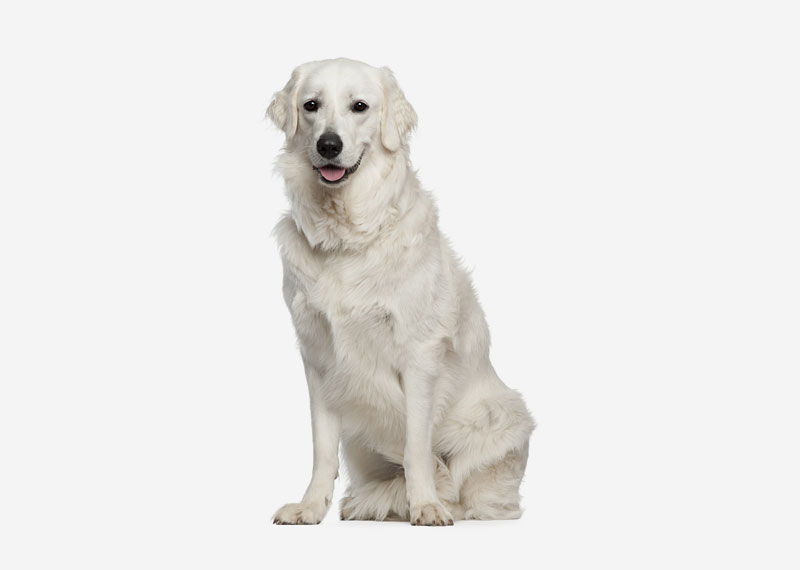The Kuvasz, (the Hungarian plural form, Kuvaszok is not used in English) is an ancient breed of a livestock dog of Hungary origin. Mention of the breed can be found in old Hungarian texts. It has historically been used as a royal guard dog or to livestock guardian dog, but has been increasingly found in homes as a pet over the last seventy years.
History
Around 2000 B.C., the hungarian people tribes moved along the recently established trade routes of the steppes, gradually leading them to the Carpathian Basin in Hungary which they conquered in 896 A.D. With them came Kuvasz-type dogs, which primarily served as livestock guardians. In 1978, the fossilized skeleton of a 9th Century Kuvasz-type dog was discovered in Fenékpuszta near Keszthely, a discovery which was remarkable in that the morphology of the skeleton was almost identical to a modern Kuvasz. If accurate, such a discovery would mark the Kuvasz as among the oldest identifiable dog breeds as only a few breeds can be dated beyond the 9th Century.After the Magyar settlement of the Carpathian Basin, the tribes converted to a more agrarian lifestyle and began to devote more resources towards animal husbandry. Whereas the Komondor was used in the lower elevations with drier climates, the Kuvasz was used in the wet pastures of the higher mountains and both were an integral part of the economy. Later, during the 15th Century, the Kuvasz became a highly prized animal and could be found in the royal court of King Matthias. Kuvasz puppies were given to visiting dignitaries as a royal gift, and the King was said to have trusted his dogs more than his own councilors. After the king's death, the popularity of the breed among the nobles waned but it was still frequently found in its traditional role of protecting livestock.By the end of World War II, nearly all the Kuvasz dogs in Hungary had been killed. The dogs had such a reputation for protecting their families that they were actively sought and killed by Germany and Soviet Union soldiers, while at the same time some German officers used to take Kuvaszok home with them. After the Soviet invasion and the end of the war, the breed was nearly extinct in Hungary. After the war, it was revealed that fewer than thirty Kuvasz were left in Hungary and some sources indicate the number may have been as few as twelve. Since then, due to many dedicated breeders, Kuvasz breed have repopulated Hungary. However, as a result of this near extinction, the genetic pool available to breeders was severely restricted and there is conjecture that some may have used other breeds, such as the Great Pyrenees, to continue their programs. The issue is further clouded by the need to use an open stud book system at the time to rebuild the breed.
Possible origins of the breed name
The word most likely comes from the Turkic languages word kavas meaning guard or soldier or kuwasz meaning protector. A related theory posits that the word may have originated from the ancient farmers of Russia, the Chuvash people, who nurtured the breed for generations and contributed many words to the Hungarian language.
Health
Although generally a healthy and robust breed which can be expected to live approximately 12–14 years, the Kuvasz are prone to developmental bone problems. Accordingly, owners should take care to provide proper nutrition to their Kuvasz puppy and avoid subjecting the puppy to rough play. As with many large breeds, Hip dysplasia (canine), a painful and potentially debilitating condition, is not uncommon. Good genetics and proper nutrition as a puppy are key to avoiding these complications.A Kuvasz puppy should not be fed a diet high in calories or protein as such diets have been associated with the development of orthopedic disorders later in life. The Kuvasz has a very efficient metabolism and is predisposed to rapid growth—vitamin supplements are not necessary and, in fact, should be avoided. Cooked bones should never be given to a Kuvasz or any other dog because the cooking process renders the bone brittle and prone to splintering, which can cause serious injury to the dog's mouth and digestive tract.







